Welcome to the enchanting world of low light indoor plants, where even the shadiest corners of your home can become lush havens of greenery. For both budding enthusiasts and seasoned green thumbs, the idea of cultivating a vibrant indoor garden without the luxury of abundant natural light might seem daunting. However, the magic of nature offers a delightful array of plant companions that not only survive but also thrive in dimly lit environments.
Understanding the charm and resilience of these shadow-loving plants can transform your indoor spaces into thriving ecosystems. Whether you’re just beginning your gardening journey or you’re an experienced indoor gardener seeking to expand your botanical collection, this guide will illuminate the secrets of nurturing low light plants. You’ll discover how to select the perfect plants, understand their unique needs, and create optimal conditions for their growth, ensuring your indoor garden flourishes year-round.
In this article, we’ll explore a variety of low light champions, from the graceful Snake Plant to the ever-popular Peace Lily, each bringing its own unique flair and air-purifying benefits to your home. You’ll learn practical tips and techniques to care for these resilient green companions, helping you cultivate a successful indoor garden regardless of your experience level. By the end, you’ll feel empowered to turn even the most overlooked corners of your home into vibrant green sanctuaries, filled with life and beauty.
Understanding Low Light Environments
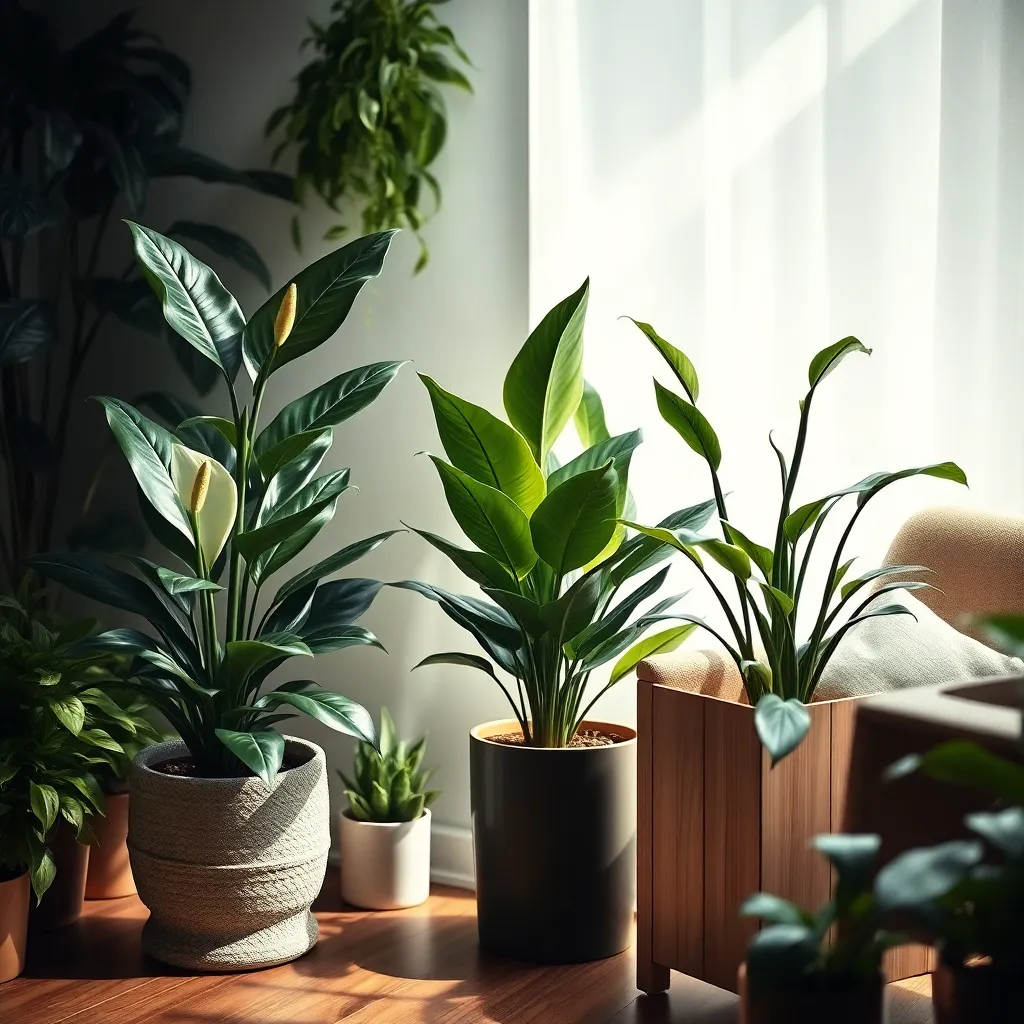
Low light environments can be challenging for plant growth, but understanding them is key to success. These areas typically include rooms with small windows, north-facing windows, or spaces that are frequently shaded by buildings or trees.
It’s important to recognize that while these spaces may have limited light, they aren’t devoid of it. Indirect, filtered light can still support plant life, especially for species adapted to these conditions.
To thrive in low light, plants often need less frequent watering since they don’t dry out as quickly as those in brighter environments. Check the soil moisture every week by inserting your finger about an inch deep; water only when it feels dry.
For optimal growth, consider using a well-draining potting mix to prevent root rot, which is common in low light conditions. A mix containing peat moss, perlite, and vermiculite can help maintain the right balance of moisture and aeration.
Advanced gardeners might experiment with supplemental lighting, such as LED grow lights, to give plants an extra boost. Set these lights on a timer to mimic natural daylight cycles, ensuring that plants receive about 12-16 hours of light per day.
Finally, remember that patience is crucial when cultivating plants in low light environments, as growth can be slower than in brighter settings. Regularly rotate plants to ensure even growth and prevent them from leaning towards light sources.
Top Plants for Dim Spaces
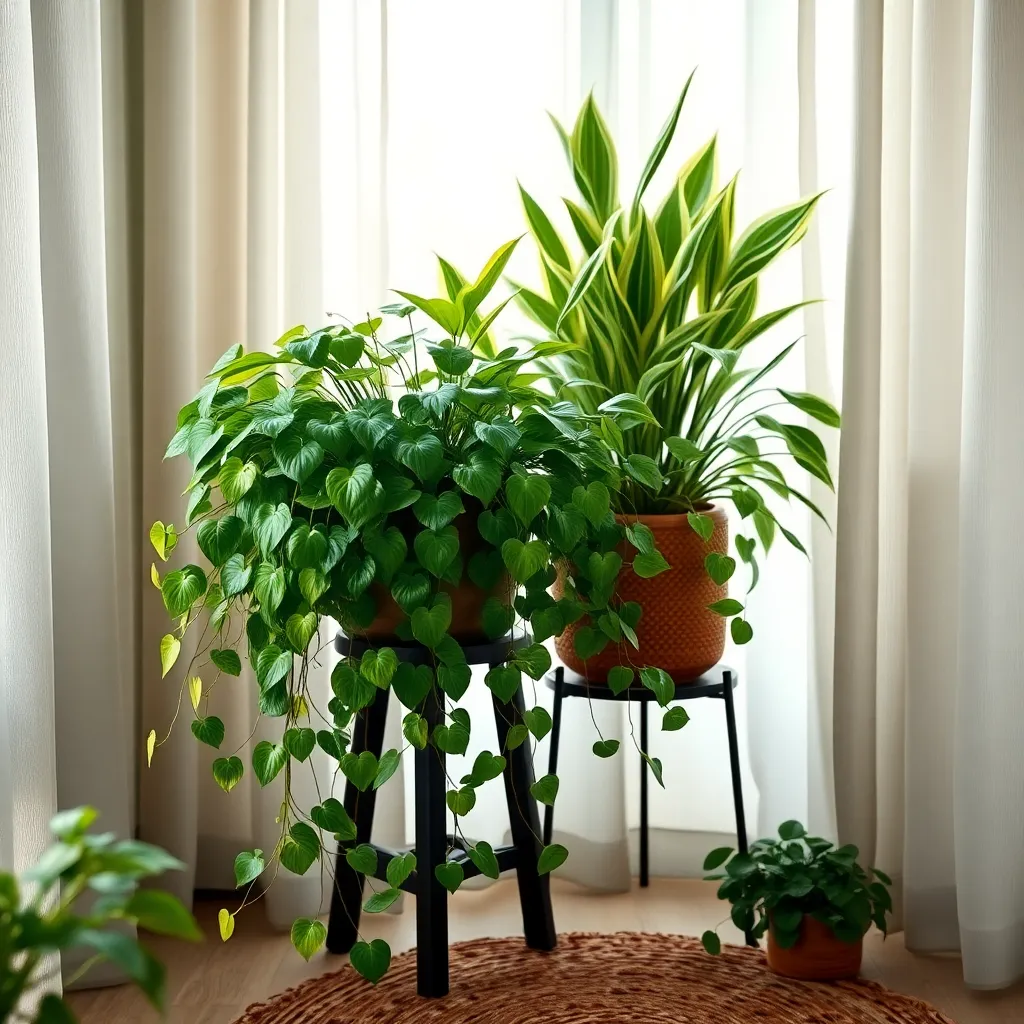
When selecting plants for dim spaces, it’s crucial to choose varieties that naturally thrive in low light. One popular choice is the Snake Plant (Sansevieria), which is known for its ability to survive in less-than-ideal conditions.
The Snake Plant requires minimal watering, typically once every two to three weeks, making it an excellent option for busy gardeners. It’s also incredibly resilient to neglect, so even if you forget about it, it will continue to grow.
Pothos (Epipremnum aureum) is another great choice for low-light areas, with its trailing vines adding a lush look to any room. This plant thrives with infrequent watering, approximately once a week, and can tolerate varying humidity levels.
Ensure that Pothos is planted in well-draining soil, such as a mix of potting soil and perlite, to prevent root rot. For advanced care, occasionally trim back the vines to encourage bushier growth and prevent legginess.
ZZ Plant (Zamioculcas zamiifolia) is a robust plant that does exceptionally well without much sunlight. Water it only when the top inch of the soil feels dry to the touch, usually every two to three weeks.
For those seeking low-maintenance options, the ZZ Plant’s ability to store water in its rhizomes makes it a great candidate. Fertilize it once every six months with a balanced liquid fertilizer to keep it thriving.
Incorporating these plants into your home not only enhances the aesthetic but also improves air quality. Place them in areas with indirect sunlight or near north-facing windows for optimal growth conditions.
Care Tips for Low Light Plants
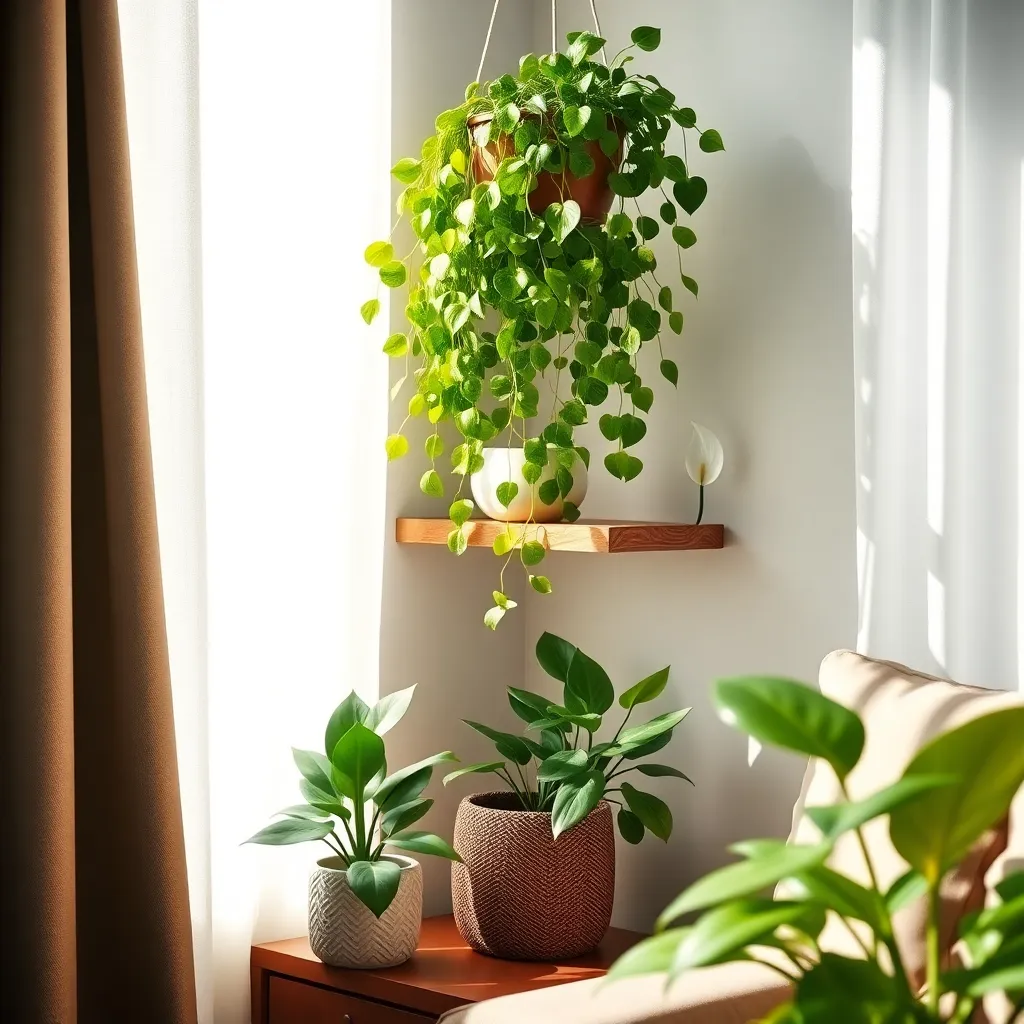
Low light plants thrive in conditions where direct sunlight is sparse, making them perfect for dim corners and rooms with north-facing windows. To ensure their health, place them in spots that receive indirect light, such as a few feet away from a window or under artificial light sources.
Watering is crucial for the survival of low light plants, but it can be a bit tricky. Check the soil moisture regularly by sticking your finger about an inch into the soil; water only when it feels dry to the touch to prevent root rot.
Using the right soil mix is essential for these types of plants. Opt for a well-draining potting mix, which often includes components like perlite or sand, to help avoid water retention issues that can lead to overwatering.
Advanced care involves understanding the specific needs of each plant species. For instance, a Snake Plant (Sansevieria) can survive with infrequent watering, while a Peace Lily (Spathiphyllum) might need more attention to stay lush and vibrant. Research your specific plant’s needs to tailor your care routine accordingly and ensure its long-term vitality.
Common Issues and Solutions
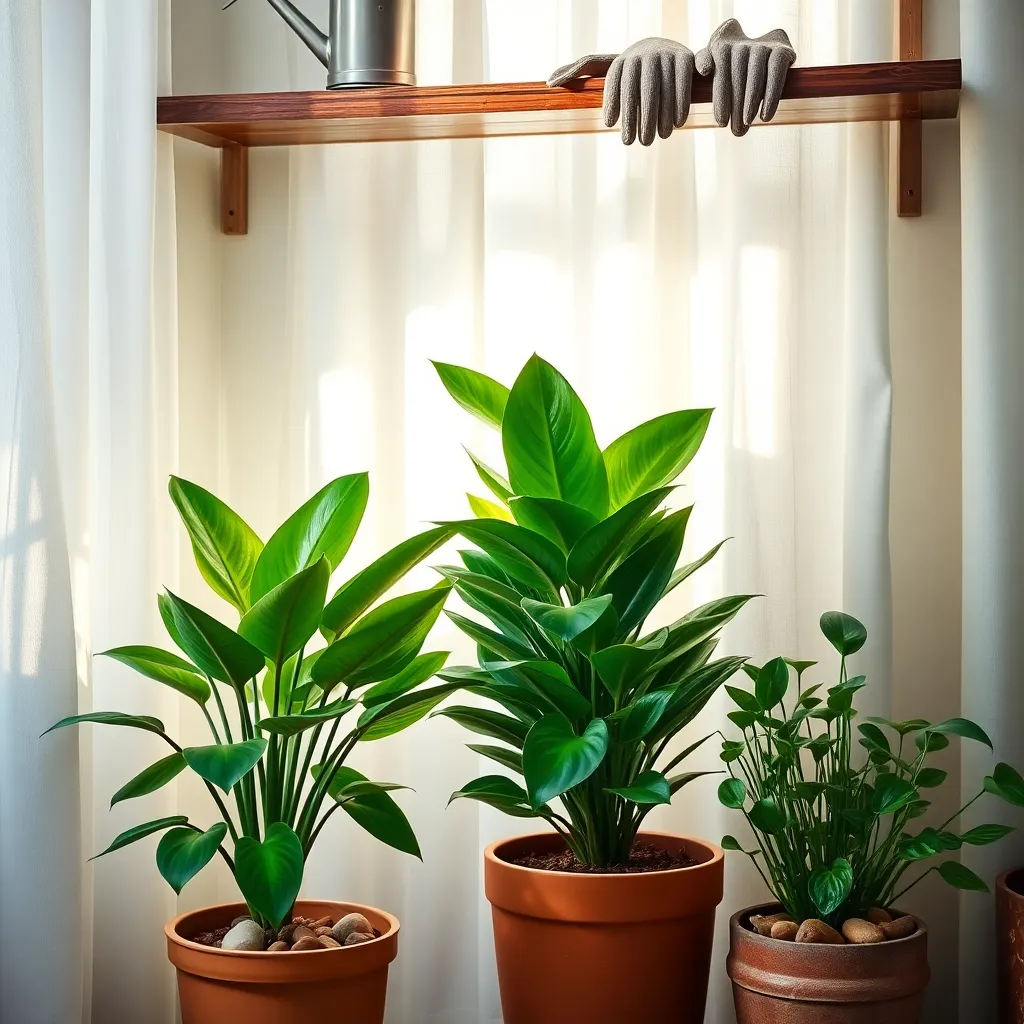
One common issue with low light indoor plants is overwatering, which can lead to root rot. To prevent this, use a well-draining potting mix and ensure your pots have drainage holes to allow excess water to escape.
Another frequent problem is pests like spider mites and mealybugs, which can thrive in indoor environments. Regularly inspect your plants and wipe the leaves with a damp cloth or use insecticidal soap to keep these pests at bay.
Low light conditions can sometimes cause plants to become leggy as they stretch towards light. To counteract this, rotate your plants every week to ensure even growth and consider supplementing with a grow light if natural light is insufficient.
Yellowing leaves are often a sign of nutrient deficiencies or improper watering. Use a balanced liquid fertilizer once a month during the growing season, and adjust your watering schedule according to the plant’s needs and the humidity of your home.
Enhancing Growth with Minimal Light
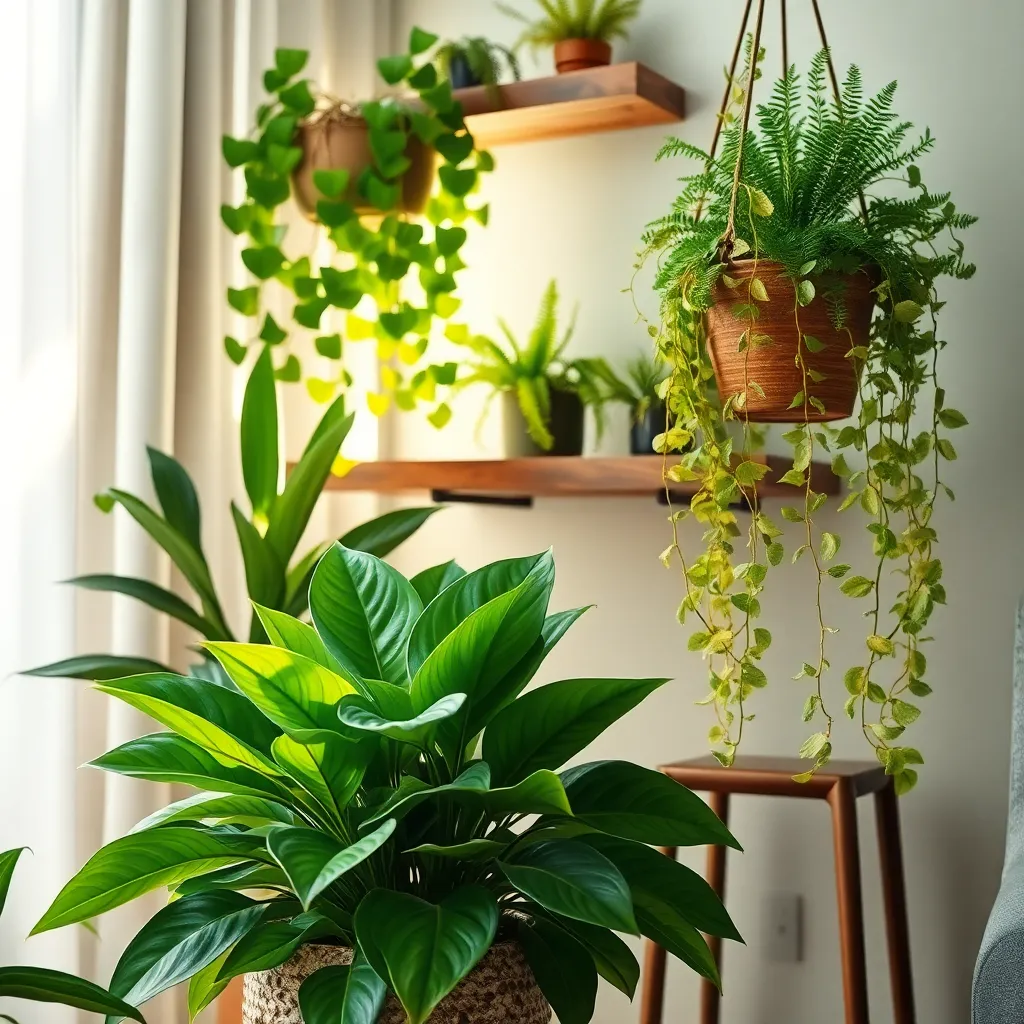
To enhance growth in low-light conditions, it’s crucial to select plants that naturally thrive in such environments. Species like the snake plant, pothos, and ZZ plant are excellent choices as they are highly adaptable and require minimal sunlight to flourish.
In addition to choosing the right plants, consider using grow lights to supplement natural lighting, especially during shorter days. LED grow lights are energy-efficient and can provide the spectrum of light needed for photosynthesis, which helps plants maintain healthy growth.
Maintaining proper soil moisture is essential in low-light conditions, as plants tend to use less water. Be sure to use well-draining soil and only water when the top inch feels dry to the touch, preventing root rot and ensuring optimal plant health.
For an extra boost, incorporate regular feeding into your plant care routine. Use a balanced liquid fertilizer once a month during the growing season to provide essential nutrients, ensuring your plants remain vibrant and robust even with limited light.
Conclusion: Growing Success with These Plants
In nurturing both your indoor garden and your relationships, understanding key concepts is essential. First, communication is the sunlight that allows any relationship to grow. Just as you adjust the light for your plant, adapt your communication to your partner’s needs. Second, trust acts like the soil, providing a solid foundation. Third, empathy, like water, is vital for nurturing connections and ensuring emotional well-being. Fourth, patience is akin to the slow growth of a plant; it requires time and consistency. Finally, mutual support, much like a trellis for a climbing vine, helps both partners reach new heights.
As an actionable step, choose one relationship concept to focus on this week. Whether it’s enhancing communication or building trust, dedicate time daily to nurture this aspect.
Bookmark this article as a handy reference guide for those moments when you need a reminder of these principles. Just as a well-tended plant flourishes, so too will your relationship thrive with consistent care and attention. Remember, every small effort today contributes to a flourishing relationship tomorrow. Embrace these concepts, and watch your relationship blossom into its full potential.

